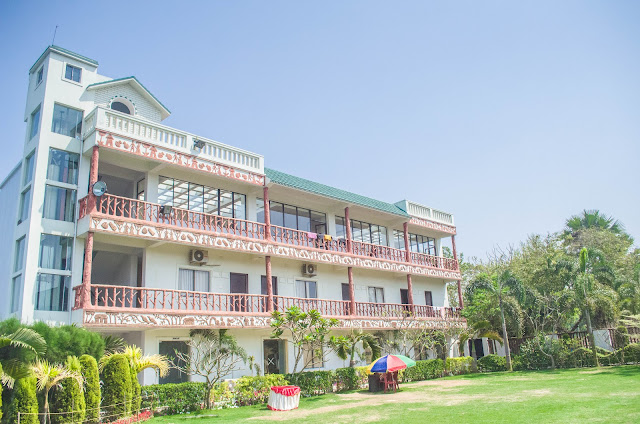Colours of Spring at Shantiniketan
Shantiniketan is a place of every reason and season. This was a visit during the Holi weekend and saw seas of Palash and Simul trees in bloom. For the past few years we have been frequenting Kharimati Restaurant/Resort for their authentic Bengali lunch. This year too we did the same on the first day but the quality of the food (possibly impacted by the large crowds) were a turn off.
Post lunch, we visited the Saturday Haat where we spent the next couple of hours. The Haat, over the past few years, has grown in size and unlike only Saturdays, the Haat extends to Fridays and Sundays too. As the sun came down, we retired to Mohor Kutir, our stay for the night. Mohor Kutir was a great experience for us. Its food, service and professionalism yet with a personal touch - made our stay one to remember. And I think, it was one of our best stays at Shantiniketan.
The next morning, after the buffet breakfast and a dip in the pool, we went to explore rural Bolpur where we saw many Simul and Palash trees in bloom.For our lunch we had booked Bonolakshmi - again a delightful experience. Bonolakshmi's Mutton curry, which I tasted for the first time can be sole reason to visit Shantiniketan. That, and the ghee are must purchases.
 |
| A view of the Mohor Kutir Resort |
 |
| Detour to the Choupahari forest |
- Distance from Kolkata: 180 kms one way. Takes between 3-4hrs.
- Road Condition: There are two routes to reach Shantiniketan.
- Tourists usually avail the Calcutta - Burdwan - Guskara - Shantiniketan (170 kms) route. which is an excellent 4 lane highway for the initial 110 kms and 2 lane for the next 70 kms. However, there also exists the option of the longer (and scenic) route via Panagarh - Ilambazaar forest - Shantiniketan which is 4 laned for the first 170 kms and 2 lane for rest of the way. This route is around 200 kms from Calcutta.
- Visit For: Be it for the cultural potpourri of melas right from the Pous Utsav or Basanta Utsav or the Kenduli Mela. Or for searching the lanes at night to see if indeed Tagore still lives in Shantiniketan. Or to see the green paddy fields of rural Bengal in monsoon and Mustard fields in winter. Or the Saturday Haat. Or a steaming plate of hot rice with melting ghee on it.
 |
| At Banolokkhi |
 |
| The mutton curry is one of the reasons I visit Shantiniketan. |
















